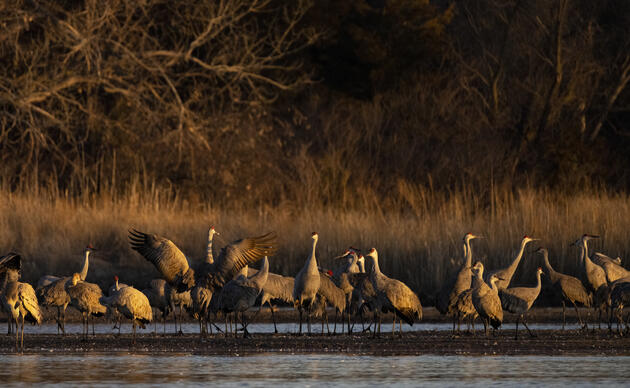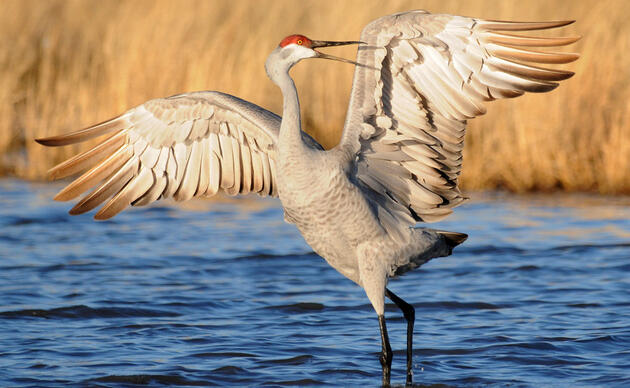In the past 20 years, the Iain Nicolson Audubon Center at Rowe Sanctuary has gone from hosting a few hundred visitors a day to more than 35,000 over the eight-weeks of crane season. When it was first built, the Visitors Center was one of the largest straw bale buildings in the country, a technique unique to Nebraska. Straw has been used in construction for centuries, but in the late 1890s, the new mechanical baler made hay an abundant, affordable resource that protected buildings from harsh winters and extreme storms.
The new east and west additions build on some of the original building’s sustainable strategies. The original building used straw bales for insulation and a closed-loop geothermal heating and cooling system that decreases the need for heating and air conditioning, which can be up to half of a building’s energy use. Geothermal heating is essentially a system that stores and pumps the building’s water underground to maintain a stable temperature. Both additions extend the geothermal system.
The design team also used several techniques that decrease the amount of energy the building will need. High-efficiency windows serve multiple purposes, beyond giving stunning views of the Platte River. Reflective glass and deep eaves over the windows decrease the amount of heat absorbed during the hottest parts of the day, so less energy is necessary for air conditioning. To further reduce collision risk for birds, a system of vertical hanging cords will be installed over the windows.
A new solar power array with 86 photovoltaic panels on the southern-facing roofs of both new wings will produce an estimated 48,000 kilowatt hours (kWh) every year. The system collects data that can demonstrate the efficiency of solar power and inform best practices for energy use.
Finally, using native plants for our landscaping has myriad benefits. First, they will require less water and maintenance long-term, even through droughts and periods of extreme weather. Second, they will support the native pollinators. Third, their deeper root systems provide more stability for the ground and stores more carbon in the soil. Isolating plants with high water needs into our rain garden creates a different habitat for the insects and small invertebrates our birds feast on.
Construction will always impact the wildlife around it, but with both time-tested and new innovative technology, we can mitigate the harm we do and grow efficiently.
The project was funded in part by the Nebraska Environmental Trust.



